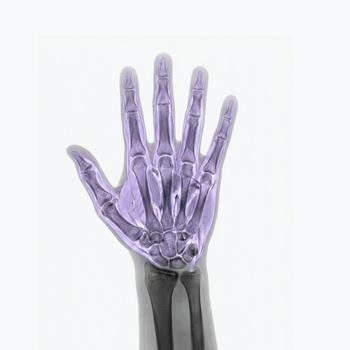Quick version
The hand is an advanced organ of movement and sensation, and can be affected by many different conditions.
- Consists of bones, muscles, tendons and nerves
- Provides grip and precision
- Common complaints include pain, numbness and swelling
- Causes can be overuse, injury or inflammation
- Investigated with physical examination and imaging
What is the hand?
The hand is the body part at the far end of the arm and consists of bones, joints, muscles, tendons, nerves and skin. It is built for both strength and precision, making it indispensable in daily life.
Anatomy and structure
The hand has 27 bones: the carpal bones, metacarpal bones and phalanges. These are held together by ligaments and moved by muscles and tendons. The thumb has a unique position that gives the hand the ability to oppose, i.e. to meet the other fingers.
Functions and movements
The movements of the hand include grasping, grasping reflex, fine motor skills and tactile sensation. The interaction between muscles and joints enables everything from powerful grips to millimetre-precision movements.
Nervous system and sensation
The nerve supply comes from the median, ulnar and radial nerves. These are responsible for sensation and motor function. Damage or pinching can lead to numbness, pain or loss of mobility.
Common conditions and diseases
Having pain in the hand can be due to overload, damage, nerve damage or inflammation. Carpal tunnel syndrome, osteoarthritis, rheumatoid arthritis and trigger finger are some common diagnoses.
Examination and diagnosis
A thorough clinical examination is often supplemented with imaging diagnostics such as X-rays, MRI of the hand or ultrasound. Tests such as Tinel's sign and range of motion tests are used to assess nerve and muscle function.
Relevant symptoms
- Pain with movement or at rest
- Numbness or tingling
- Swelling in the joints of the hand
- Reduced grip strength
- Locking in the fingers or wrist
Related conditions and diagnoses
- Carpal tunnel syndrome
- Rheumatoid arthritis
- Trigger finger
- Dupuytren's contracture
- Hand fractures
























